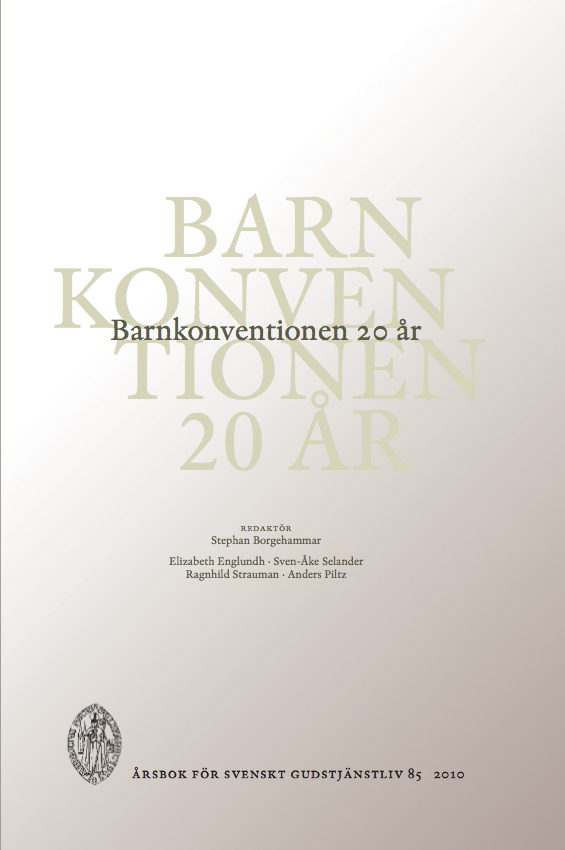FN:s konvention om barnets rättigheter: historik, teori och praktik
Abstract
The UN Declaration on the rights of the Child: History, Theory and Practice
The purpose of this article is to contribute to improved knowledge of issues related to Children’s Rights. Already in the early 1900s, there were both individuals and ideological currents that defined and promoted Children’s Rights. In 1959 the UN adopted a Declaration on the Rights of the Child and in 1989 the rights of children were further strengthened when the UN General Assembly adopted the Convention on the Rights of the Child. The distinctive features of the Convention are: (1) it gives children the opportunity to participate in matters concerning their future and well-being (an aspect that was not provided for in previous declarations) and (2) it reinforces the relationship between state and child. Today, 20 years after its adoption, the great challenge is to implement the Rights so that they also become known and understood by children. Most decisions relating to children are made in local governments and the internal administrative system in Sweden is an aggravating factor in the fulfilment of Children’s Rights. Therefore it is crucial that knowledge about these Rights is spread and that there is an ongoing discussion about what these Rights imply. The interdisciplinary nature of the Convention helps us to see that there are several ways to approach its implementation. Research in this area is essential in order to interpret the Rights in practice.
The most central articles to be considered are: 2. No child shall be discriminated against on any ground; 3. The best interests of the child shall be a primary consideration in all decisions concerning the child; 4. Children shall be a prioritized group; 6. The child has the right to life, survival and development; 12. In all matters concerning the child, the child has the right to express his or her view; 42. The state has an obligation to inform both children and adults that children have rights and what this means for the adults charged with ensuring the preservation of these rights. This is a task which must be grounded in dialogue, communication and courage – and of course in sound knowledge of the Convention itself.
Keywords: UN Convention on the Rights of the Child, Implementation, CRC, Children’s rights, The Best Interests of the Child.
Downloads
Published
Issue
Section
License
© the authors, Laurentius Petri Sällskapet för Svenskt Gudstjänstliv and Artos & Norma Bokförlag. Copying and using material from Svenskt Gudstjänstliv for scholarly purposes is permitted as long as the source is indicated. For other uses, please contact the respective author as well as the publisher. Special restrictions may apply to images.


